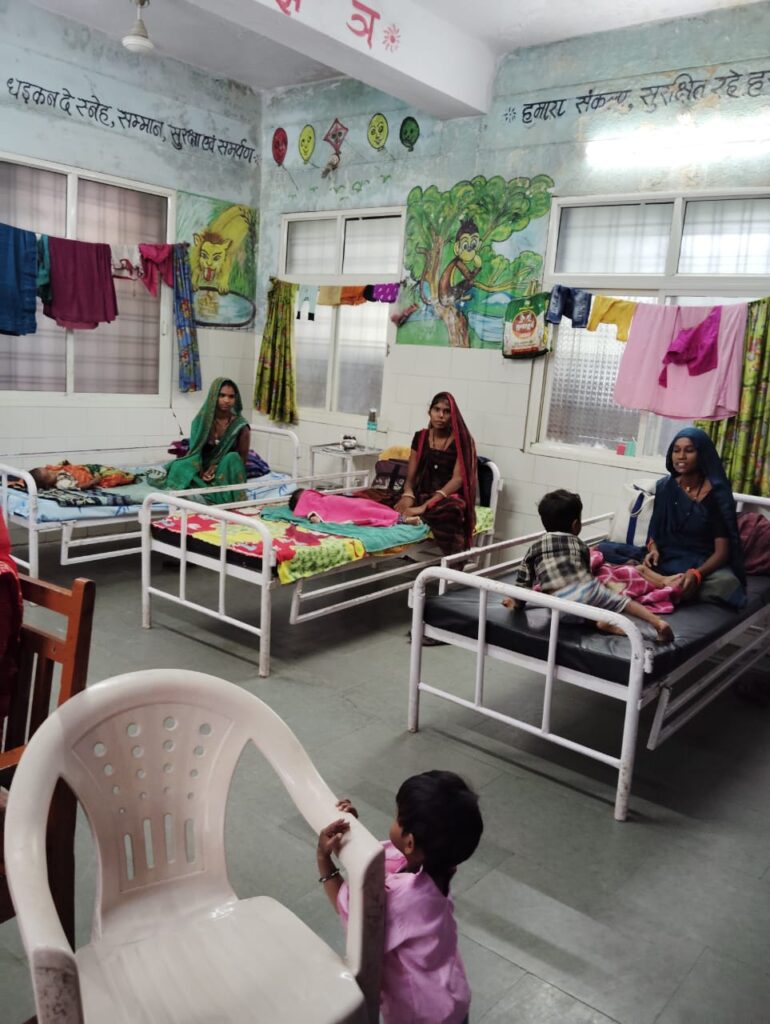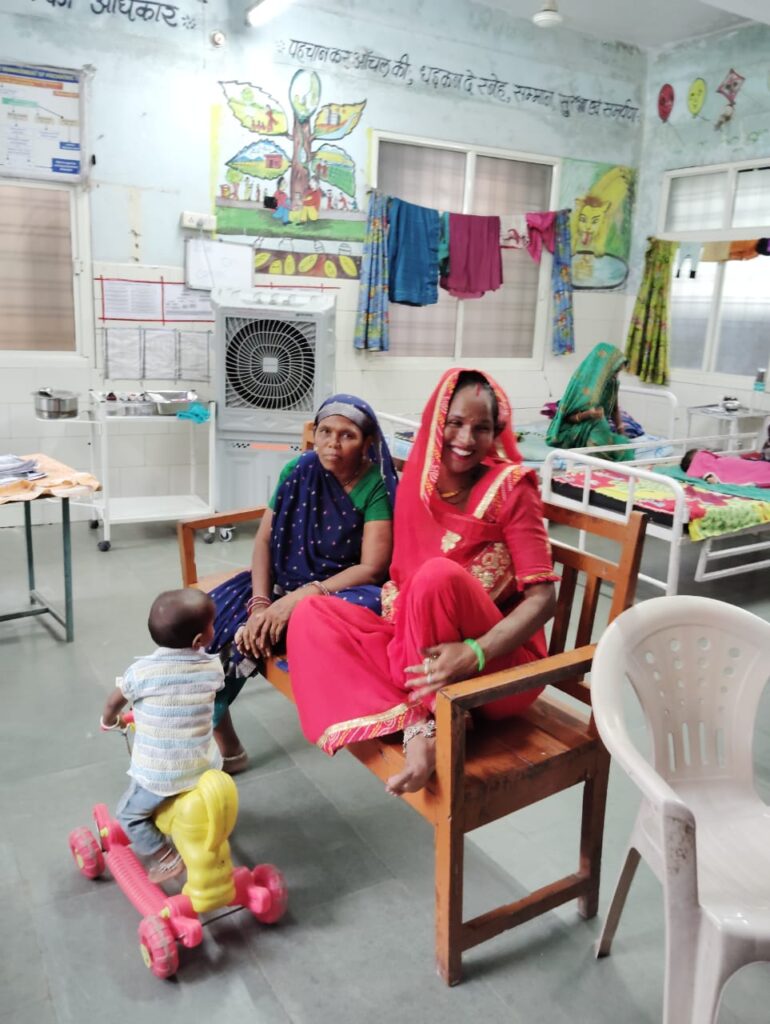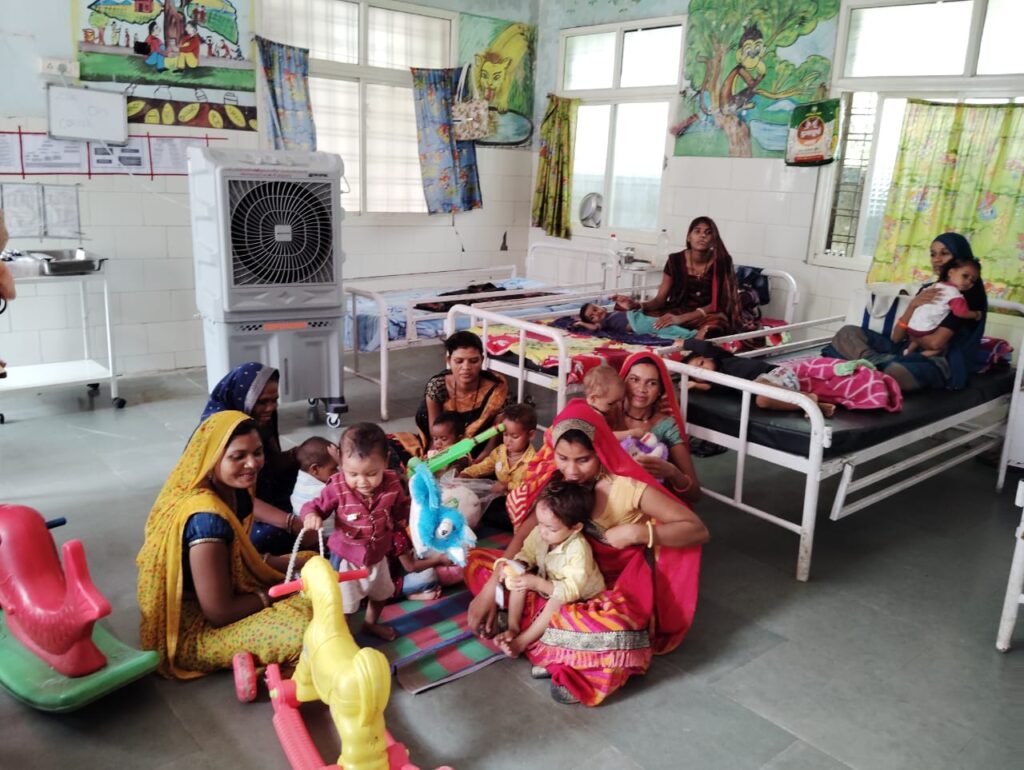As part of their aim to bring about better health and nutrition for children and pregnant women, team members from the Health and Nutrition Programme ofSamaj Pragati Sahayog (SPS) usuallyaccompany village Aanganwadi workers on house-to-house visits, to ensure that health surveys are conducted as they should be. During one such recent survey in SPS’s Kannaud location (area of work), 12 infants were found to have ‘Severe Acute Malnutrition’ (SAM). Girls being married off while still very young, and having pregnancies in quick succession, is regarded as a major reason for malnutrition amongchildren, while other causes include mothers being unable to breastfeed their infants regularly or pay attention to their older children’s diet due to working away from home as daily wage labourers. Illnesses stemming from the lack of hygiene is another factor. Children with SAM are recommended for inpatient care to provide clinical management and reduce mortality.Accordingly, Programme worker Mahesh Gurjar advised the parents of these children that they be sent to the nearestNutrition Rehabilitation Center (NRC), where infants from 6 months to 5 years of age may be admitted for treatment, along with their mothers or other caregivers, with the added aim of capacity building for the latter in appropriate feeding and caring practices for infants and young children.

At first, the families were against the idea. While a valid anxiety about the loss of daily wages was articulated, it’s true that malnutrition is a poorly understood concept for the rural poor, with people often being in denial about its existence. It’s common, for instance, to hear how a father, too, looked weak as a child but grew up strong. And superstitions prevail, like children being victims of the evil eye.
Mahesh explained that the NRC, set up by theGovt. of India as part of its health policies, offered14 days of free treatment, and would provide the severely malnourished children with nutrient-rich meals. Their mothers, too, would be given accommodation and well-prepared food. He informed the mothers thatthey would be paid a daily wage for childcare, at Rs 120 per day for all 14 days. This provision was instituted precisely because the NRCs can be far away – in the case of Kannaud it is some 40-45 km distant – and this means losing work and wages, which poor women can scarcely afford to do. It is necessary, indeed compulsory, that such small children be accompanied by their mothers or grandmothers. Only one adult may stay with the child, while other family members may visit occasionally. On further reflection, the families consented to send their children to the NRC.

When Mahesh Gurjar visited the Center to complete the admission formalities, he saw that all the women and children were housed in a 50-feet-long hall which had beds, and was also the space for eating and playing. However, this large area was equipped with only twoair coolers, and with the outside temperature touching 45° C the room was suffocating for the infants and adults living there. Mahesh requested the doctors on duty to have additional coolers installed, but was told that the facilities were as provided by the Govt, and there was nothing further the Center’s staff could do.
Mahesh determined to bring up the issue at the upcoming meeting of the Kannaud Pragati Samiti, atwhich the organisation’s leaders as well as local workers would be present. He spoke to them about the urgency of getting the 12 severely malnourished children admitted to the Center, and also emphasised that the children must be able to recover incomfortable surroundings.


Taking note of the grave situation, the Samiti leaders lost no time in putting these concerns before the rural women’s Self-Help Groups (SHGs), whichcame forward to help the children, with a commitment from two SHGs from Kannaud villageabout bearing the cost of additional coolers. Sagar Pragati Samuh and Shivani Pragati Samuh were started some years ago with monthly contributions of Rs 50 by women who come from the poorest local households. Through effective management, they have not only been taking care of members’ personal needs but have also accumulated extra funds that they have begun to spend on social welfare. And so, in May 2024, the group leaders purchased two coolers for Rs 16,000,for the benefit of children in the Center.

The 12 children, 7 girls and 5 boys, spent 14 days at the Center, accompanied by their mothers. Here, good care was taken of the children’s diet, health and hygiene, with the mothers being trained to pay attention to these aspects in the long term.Each of the mothers received the sum of Rs 1,680 as wages for 14 days’ work. The 12 children soon began to gain weight improvements in overall health. On their return home, their families, delighted to find the childrenlooking well and strong, expressed their gratitude to the Health and Nutrition Programme team.
Writing: Sangeeta Randhawa
Source: Mahesh Gurjar
Photography: Pankaj Piplodiya
